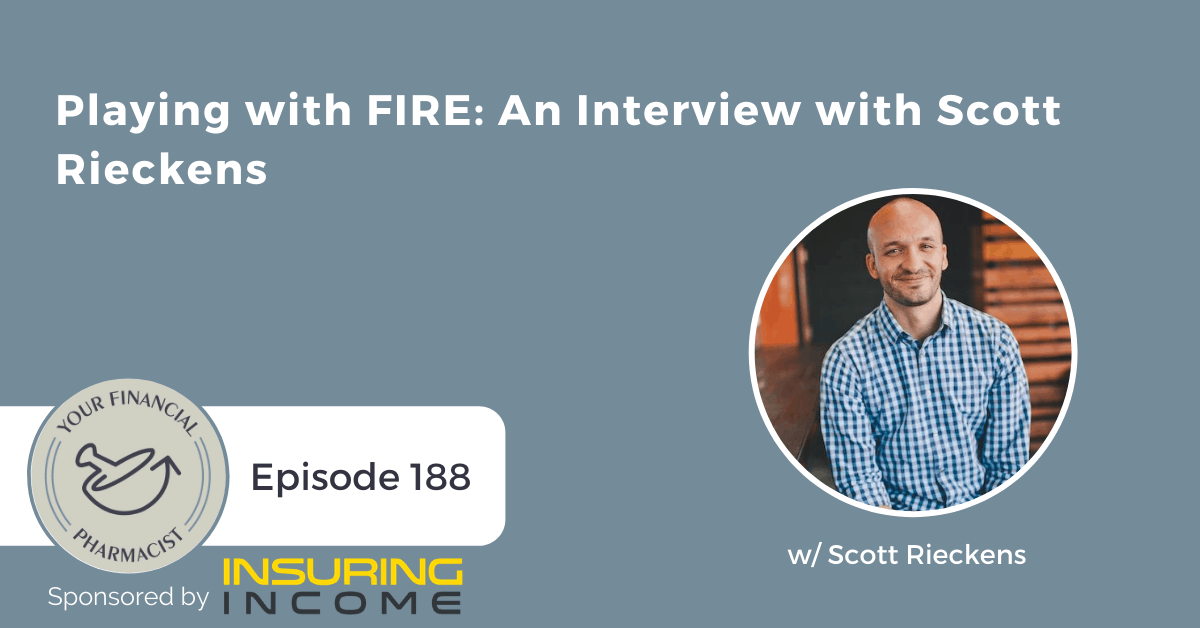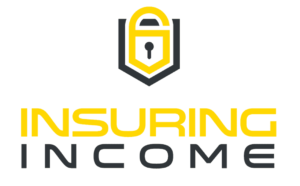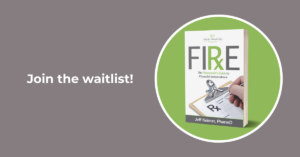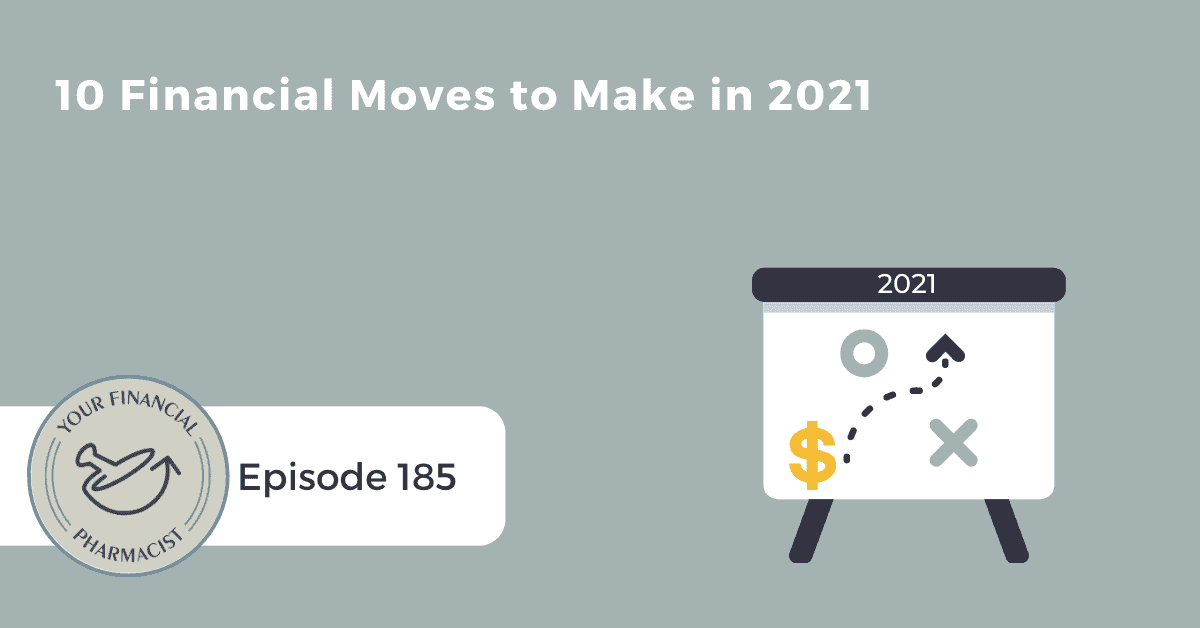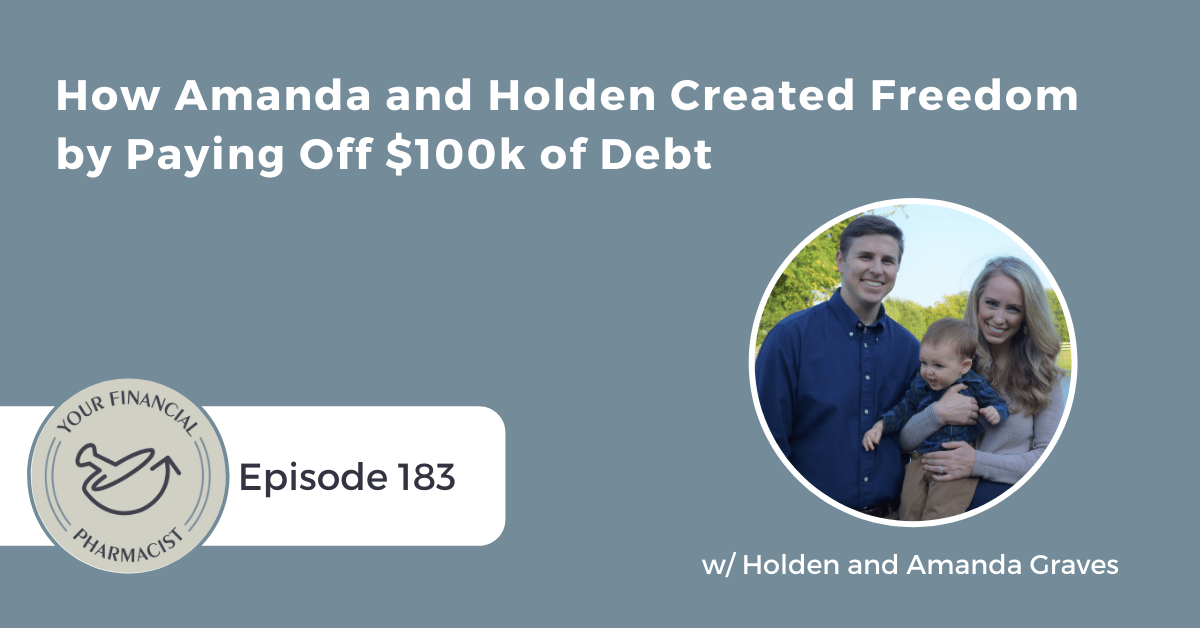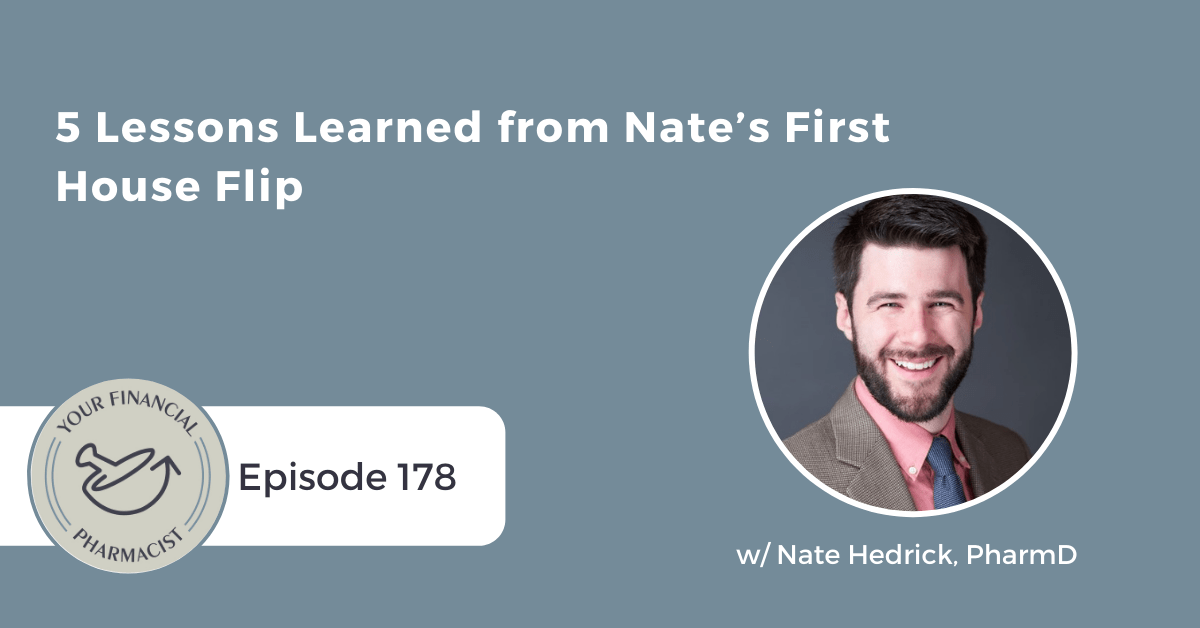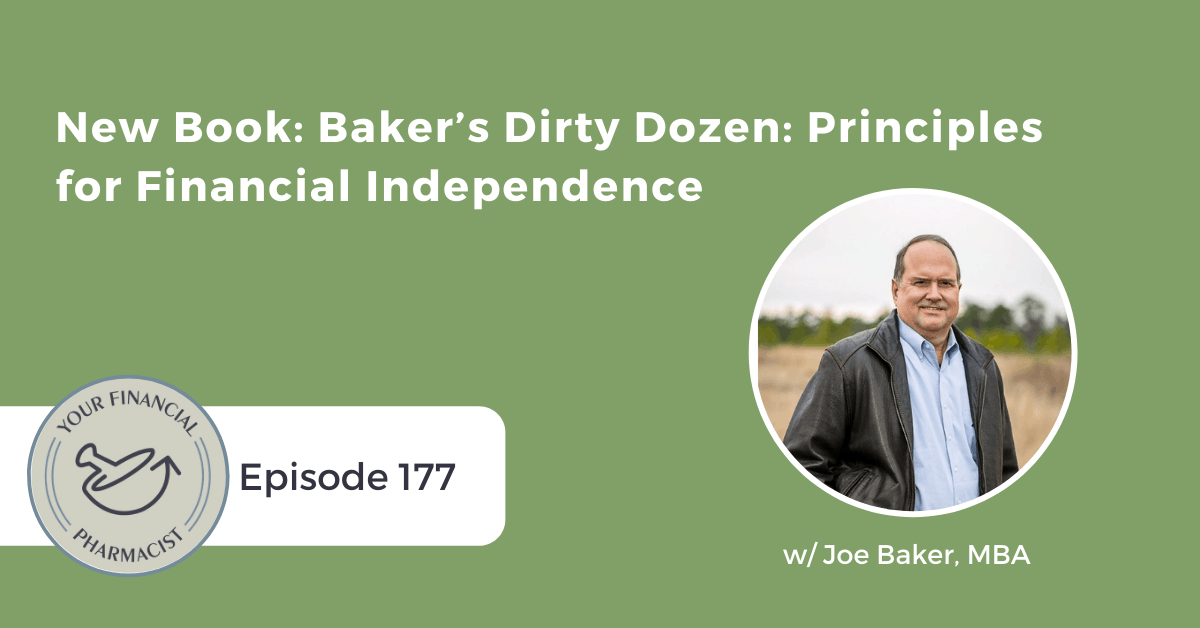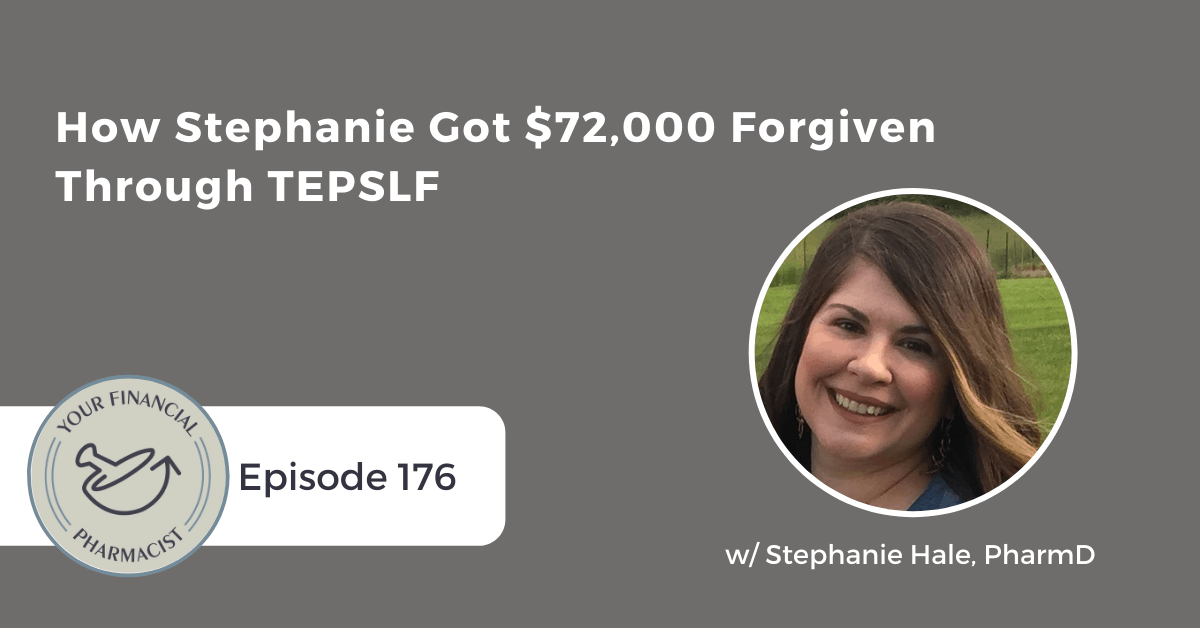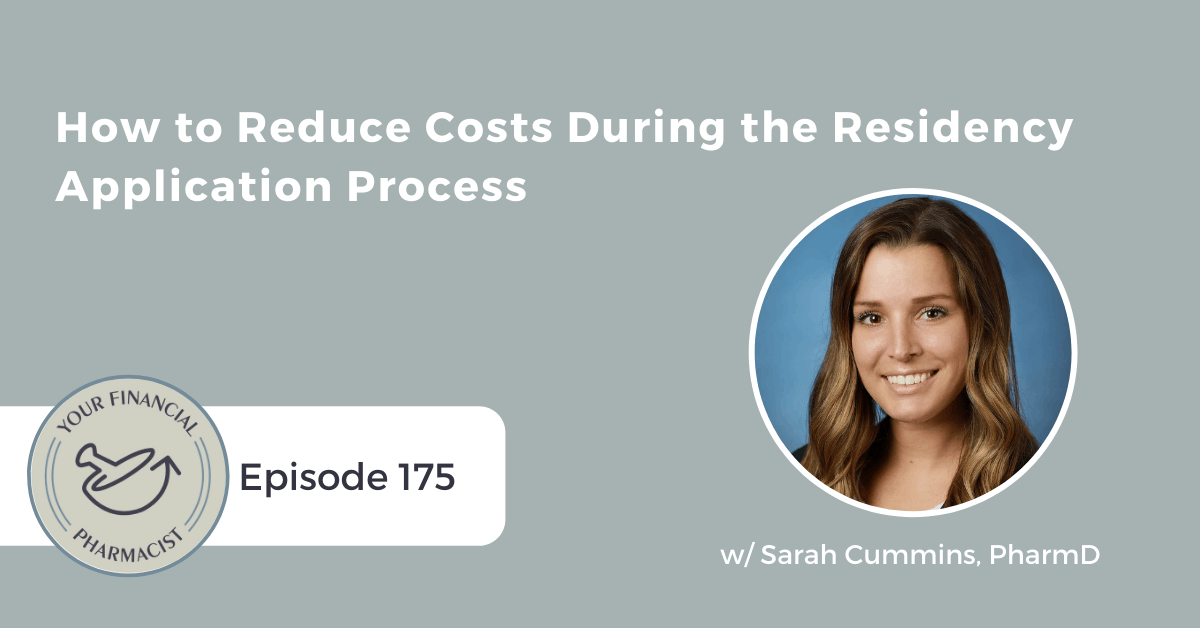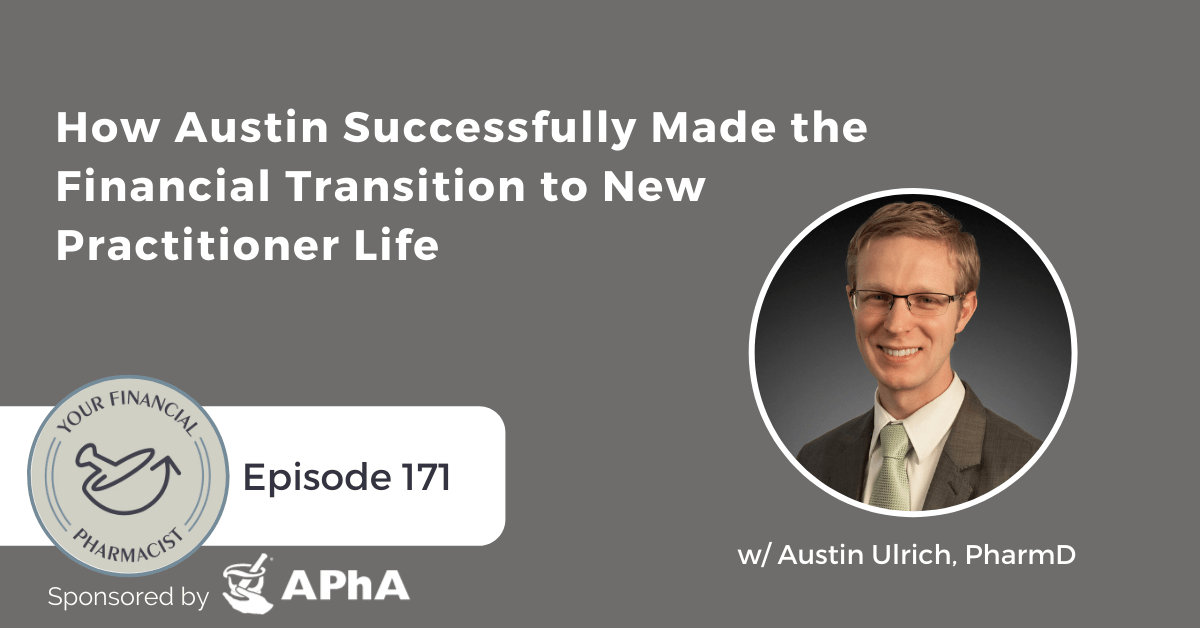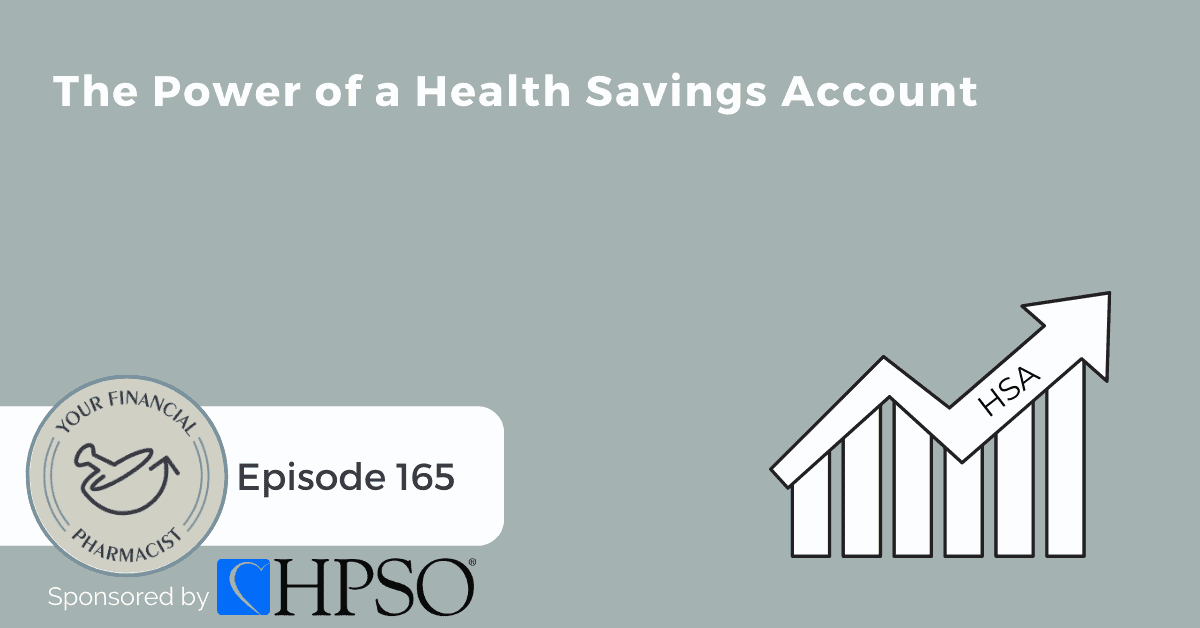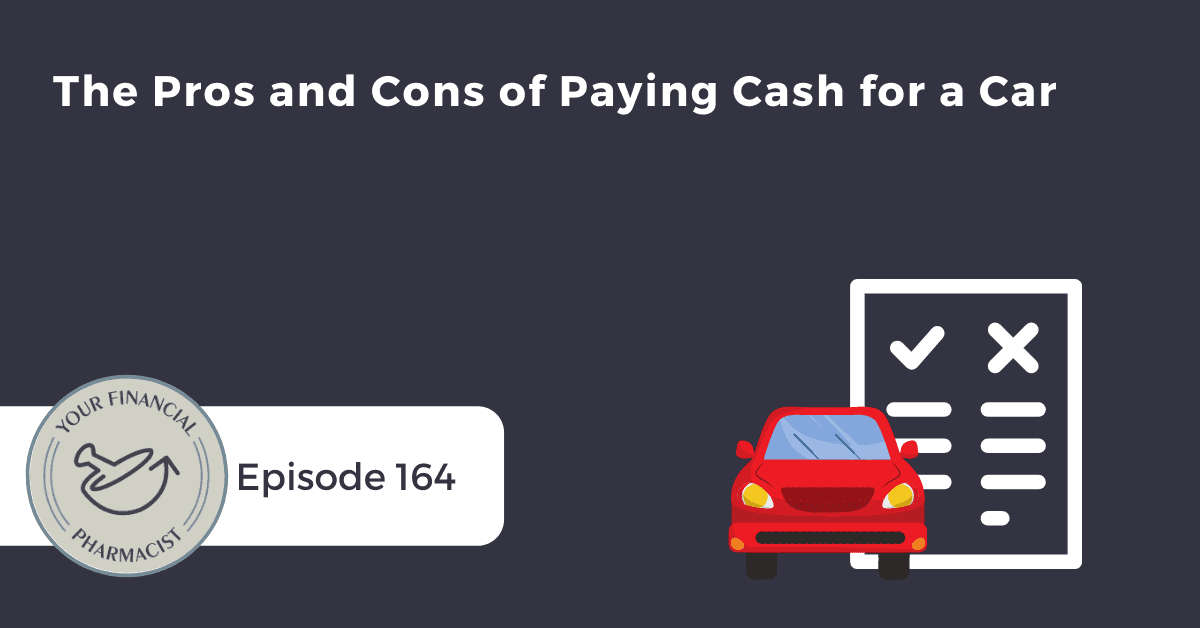Playing with FIRE: An Interview with Scott Rieckens
On this episode, sponsored by Insuring Income, Scott Rieckens, author of Playing with FIRE, joins Tim Ulbrich to talk about his journey towards achieving FIRE. Scott digs into the ins and outs of the FIRE movement, why he and his wife decided to leave their friends and family in San Diego, how to calculate your early retirement number, and strategies for implementing your own FIRE plan.
About Today’s Guest
Scott Rieckens is an Emmy-nominated film/video producer, serial entrepreneur, and author. Scott has spent his career as a storyteller connecting people with ideas. Along the way, Scott’s work has generated millions of views through a feature-length documentary, multiple televisions series, short films, and a diverse range of commercial projects for Microsoft, NBC, Facebook, FOX, Taylor Guitars, BMW, WIRED and others.
Now, Scott has created Playing with FIRE, which explores the growing community of frugal-minded folks choosing a path to financial independence and early retirement. He and his family reside in Bend, OR.
Summary
When Scott Rieckens, author of Playing with FIRE and creator of the documentary Playing with FIRE, discovered FIRE (financial independence, retire early) a few years ago, it was life changing for him and his family. Achieving FIRE allows people to potentially retire decades earlier than they normally would, a dream that many think could never become a reality. There are some guidelines that allow people to reach this dream, like the 4% rule and 25x rule, however, Scott mentions that FIRE helps you learn habits that push you to save a lot more than you ever thought possible and gets you to start spending your money on things that align with your values. He says that if you start saving more than your spending, you can invest your money in index funds, max out tax advantaged accounts, and let compound interest take over.
Scott became interested in starting a journey towards FIRE after realizing that he wasn’t in control of his time and was spending more time working than he was with his family. With some calculations, Scott determined that if he saved 16% of his income he would retire in 33.4 years but if he saved 58% of his income he could retire in 11 years. He realized that his family was spending money frivolously and went on a quest to align their spending with their values to help reduce their expenses. To figure out his family’s core values, Scott and his wife, Taylor, independently wrote 10 things that provide happiness to them. They continued this exercise weekly and used it as a tool to reduce spending money on things that weren’t aligned with their values and created a budget around what makes them happy.
Scott also talks through how mental shifts can help you cut expenses, how to push yourself to save more money, how to calculate your early retirement number, and strategies for implementing your own FIRE plan.
Mentioned on the Show
- Insuring Income: Get Quotes and Apply for Term Life and Disability Insurance
- Playing with FIRE
- Playing with FIRE: How Far Would You Go for Financial Freedom by Scott Rieckens
- Playing with FIRE: The Documentary
- Mr. Money Mustache: Financial Independence Podcast
- Mr. Money Mustache: The Mad Fientist
- FIRE Retirement Calculator
- YFP Planning: Financial Planning for Pharmacists
- Jonathan Mendonsa
- ChooseFI
- Vicki Robin
- Your Money or Your Life: 9 Steps to Transforming Your Relationship with Money and Achieving Financial Independence by Vicki Robin and Joe Domingues
- The Minimalists
- Brad Barrett
- Follow Playing with FIRE on Twitter: @playwithfireco
- Follow Playing with FIRE on Instagram: @playwithfireco
Episode Transcript
Tim Ulbrich: Scott, welcome to the show!
Scott Rieckens: Thanks for having me.
Tim Ulbrich: Really excited about this interview. As I mentioned before we hit record, I loved the book “Playing with FIRE,” couldn’t put it down, read it in about 24 hours. Loved the documentary. And I’m excited to get you in front of our community as I know this topic is something that is of interest, and I think your story as well as the broader conversation around FIRE is going to provide a lot of value. So thank you again for taking the time.
Scott Rieckens: Yeah, it’s my absolute pleasure. Thanks for having me on.
Tim Ulbrich: So for those in our community that are hearing about FIRE for maybe the first or even second time, give us a high level overview. What exactly is the FIRE movement all about?
Scott Rieckens: So the FIRE movement, it’s — FIRE is an acronym that stands for Financial Independence, Retire Early. And I think it’s a community of people who are practicing sort of a preconceived set of principles so that they can put themselves in a position of financial independence, potentially retiring decades earlier than they would have expected with sort of the way we saw ourselves growing up. So you know, it’s sort of nebulous because there are certain rules that — well, there’s things like the 4% Rule that’s called a rule, but it’s really more of a guideline. And I kind of see many of the principles of FIRE being more of a guideline than a rule. So there’s no hard and fast rules in the FIRE movement. There’s probably not even a real movement yet. But I do think that we’re starting to see seeds of social change. And once, you know, once this can really hit mainstream to the point where we’re seeing social change predicated off of or because of the FIRE movement, then I think we can call it a movement. But for now, it’s fun to call it the movement because it helps those of us who are trying to make it a movement move along. But ultimately the idea is that you learn habits that help you save a lot more than you thought was possible or just really start spending according to your values and really taking a hard look at what those values are as it relates to your spending. And if you can start saving more than you’re making, well, we have a pretty tried-and-true investment strategy. You know, and again, it varies and they’re more guidelines. But in general, people like to invest the surplus in index funds and max out your tax advantaged accounts as much as possible. And then the beauty of compound interest takes over, and the next thing you know, you’re looking at a growing net worth, a growing portfolio, and before you know it, you might have enough to live off of for the rest of your life. So these were all foreign concepts to me three years ago. And then I heard a podcast with Mr. Money Mustache, who is one of the — maybe one of the modern founders of the FIRE movement — and he was discussing these things, and I had never heard of them. I always looked at investing as sort of this nebulous thing that I wasn’t too aware of and I would need a Master’s degree to even participate in. So I kind of brushed it under the rug. And then I heard about all these things, and it all sounded pretty easy to understand and pretty accessible, and it all made sense. And so that’s kind of how I got on the path to our FIRE journey.
Tim Ulbrich: That’s great. And I love that you mentioned, Scott, guidelines because I think that it can feel perhaps if people are learning for the first time that it’s an exact science or somewhat legalistic in some regards. But as we talk about many parts of the financial plan, it comes down to customizing it to your personal situation, and everyone’s situation is different. So I think the guidelines, the principles, are really important. And one of those being — you mentioned the 4% Rule. Talk to us about what is the 4% Rule, and how does that impact one determines what their “FIRE number” is?
Scott Rieckens: Yeah, so the 4% Rule, like I said, more of a 4% Guideline, is a pretty incredible little assumption. And it’s that if you withdraw 4% off of your portfolio annually that — I think it’s something like you have a 96% chance of not running out of your principal investment portfolio over 30 years. And it’s based off of this thing called the Trinity Study. So another way to look at it is — the way I like to look at it is the 25x Rule. And so basically, you take your annual spending. Let’s say it’s $40,000 a year. And you multiply that by 25. And that is $1 million. And so basically, it gives you a way to figure out how much do I need to retire? So if your annual spending is x, you multiply x by 25, and that’s how much you need to retire because you’ll have a 96% chance of never running out of the principal investment portfolio that you have. So it’s a pretty darn safe assumption and guideline. Now, there are some people in the movement that are maybe talking about 3.75% or 3.5% is even safer, and that’s — you know, that all has to do with so many different parameters: your risk tolerance, if you plan to have sort of a side hustle or any kind of passive income or non-passive income into your “retirement years.” And those things can affect, you know, when you decide or what your percentage or when you decide to pull the trigger on your path to financial independence. But in general, I mean, I was starting from scratch. So I couldn’t have even told you how to understand what I need to retire or what that would even look like. And so to just call it the 4% Rule or the 25x and the way I just described it to you, like that’s pretty simple. It made sense to me. And it’s backed by some pretty credible studies. And like I said, there’s people in the movement who are far superior to me in intelligence who pick this stuff apart annually. And so this isn’t something that’s like oh yeah, a study way back in the day said this thing, so we’re all good. This is something that people are constantly scrutinizing. And it turns out what it’s all predicated on is the stock market over time just continues to grow. And so if you’re putting your investments into the stock market — and one of the safest bets you can make is investing in index funds because especially really solid index funds like let’s say Vanguard’s VTSAX, there are a whole team of people who are ensuring that the index of stocks are the highest performing stocks they can possibly have in that index, and it basically represents the growing stock market. So what’s nice about that is you can take a pretty reasonable growth average, and then you can start building models for what your future might look like. And like we have a retirement calculator on our website that, you know, basically bakes in all these principles into one little calculator, and you just plug in your own personal numbers and you can kind of see, oh, alright, you’re on the path, and this is how long it’s going to take you to reach financial independence. Taylor and I did this early, early on in our journey, and for Taylor, it was a huge eye-opener. It was for me as well, but I had gone through a lot of this stuff because I didn’t bring it all to her right away because it was a lot to bring because we were making a lot of interesting money decisions at that time, and there was a lot to unpack there to keep our relationship together while trying to also convince her to maybe join me on this crazy quest to pursue FIRE. But ultimately, you know, when we did the retirement calculator, at our current spending at that time, we were looking at — I think it was something like 40 years of additional work. And at that point, we were so burnt out by work, 40 years sounded like a life sentence. And it was something like we’d be working into our mid- to late 70s I want to say. And then I did some rearranging and said, OK, well if we cut our rent by this and we get rid of our two leased cars and we buy a used car for $8,000 or whatever it was, and we cut our food spending — we needed to cut that quite a bit, it was more than half, let’s say that — and then all these other extraneous things we’re doing, I mean, entertainment. The amount of money we were spending on entertainment was insane, especially where we lived where there was so much free entertainment all around us. And I started doing those numbers and kind of just built a pretty reasonable budget, and I re-entered that information into the retirement calculator to see that we were I think at that time, it was something like 10 years or something away from financial independence. I mean, to shave three decades off of your working career by just making smart money decisions, to me, that was a no-brainer. And it was a huge eye-opener because it wasn’t as if we were spending because we couldn’t help it. It wasn’t because — we weren’t spending because we have an insatiable consumeristic bent, you know?
Tim Ulbrich: Sure.
Scott Rieckens: We didn’t see ourselves that way at all. We kind of were that way, but we didn’t see ourselves that way. And so to just have that eye-opening realization and to get that in order and to do so with the guidance of a pretty strong community online where I could go for answers at any time and have some pretty compelling arguments on why I would want to do these things, it was a pretty quick and swift decision I think in the Rieckens household. And then we got busy sharing that story with the world because I’m a content creator by trade, and this story just seemed too important not to share.
Tim Ulbrich: And it was a great story to share. And for those that want to check out the retirement calculator as well as the other resources and learn more about the book, the documentary, PlayingwithFIRE.co, again, PlayingwithFIRE.co. And Scott, the math is really incredible. I pulled a note from the book. You had mentioned that when you first crunched the numbers using that retirement calculator, you determined you could retire in 34.3 years with a savings rate of 16%, which is a pretty good savings rate. And that was using $120,000 annual expenses, $22,000 in savings. And then the next calculation showed a drop from 34.3 years to 11 years if you could cut expenses in half and get to a savings rate of 58%. So I think that’s what I love about the way you teach this material, the way others teach this in the community, the 25x Rule or maybe it’s the 27x Rule, whatever that number is is that it helps shine a light on retirement numbers. It’s math, right? It’s a set of assumptions, and then you can look at things and determine, OK, what can I change? What might I not be able to change? What levers can I pull? What will have more impact? And then you’re off and running if that’s a goal that you want to pursue. And so I want to talk more about your story. And I want to read for a moment a segment from the book, Chapter 1 is Work, Eat, Sleep and Repeat. And you say this at the beginning of the chapter. You say, “If you’d driven by me on the freeway in San Diego on this particular Monday morning in Feb. 2017, you probably wouldn’t have looked twice. A guy in his mid-30s, sitting in traffic in a relatively new but unremarkable car, drinking a cold brew from Starbucks, just another American heading to work. In fact, there was nothing particularly special about that Monday morning, and I would have lumped it in with 100 other ordinary Monday mornings that I had spent navigating traffic on my way to work, except that on this particular morning, I heard an idea that would change the course of my entire life, an idea that would cause me to quit my job, leave California and spend a year traveling with my family, to question everything I thought I knew about success, money and freedom, to find the secret to the American Dream, the thing that most people crave but few achieve, the ability to do absolutely anything I wanted.” My question here is what caused this desire and feeling? And when did this begin?
Scott Rieckens: Man. I haven’t heard that back in awhile. That was fun. I think we all have an inherent desire for a certain sense of freedom and independence. And you know, I think — I can’t speak for everyone, but when I was in school, when I was in high school and then getting into college, I look back with sort of I think I had sort of a relentless optimism that work would be interesting and what I would do would be great and the things that would follow that, family and friends and all the things, you know, that they would carry me along the way. And I think as you start to get in — well, in my case, got into my mid-30s, I’d been working for a decade, some of those things came true. I got to achieve some goals I had set for myself. I had done some things I was proud of, had just started a family, which I was also immensely proud of. And all those things are fantastic, but they weren’t the entire picture of fulfillment for me because what was weighing me down was I wasn’t in control of my time. Next thing you know, I’ve built this family, I’ve got this job, but there’s no balance here. I have to be at my job more that I want to be and see my family less than I want to see them. I think that’s what it really boiled down to was just why don’t I have that control? And when it hit me, what really hit me was it was my own decisions, it was my own choices, our family’s own choices that were hindering us from having that control and having that freedom. And that’s something that had not connected for me. And you know, at the end of the day, for better or for worse, money is how the world operates. You know, this is how our social construct has been constructed. So what it really boils down to is can you earn money? And if so, how are you using it? And I just had not spent the time to consider those things. One of the taglines of this whole project is what if a happier life were a few simple choices away? And I think that’s ultimately — like that encapsulates what I had found, which was that there is a happier life a few simple choices away. That’s incredible. And then the next question that we kind of posed to ourselves was like, how far would you go for financial freedom?
Tim Ulbrich: Yes.
Scott Rieckens: You know? And that’s ultimately up to you. So that’s why I always say like, the FIRE movement is a set of guidelines, not rules. And the FIRE movement may or may not a movement, but there’s certainly a community of people who really appreciate the idea of spending less on extraneous things that don’t really bring you value and really being smart with your choices. And when you have a group of people that see it that way, it makes it a lot easier to do because I also remember having to unpack our life a bit. You know, there were a lot of — whether it was true or not, whether it was sort of a figment of our imagination or a reality, it felt daunting to suddenly take on a new identity, right? Because you have all of your friends and all of your family that see you one way and have gotten accustomed and used to the way you are. And to have to just kind of throw all that out and start fresh can be really daunting. And so it’s really helpful — you know, like never before were we able to just connect with people that see it this way that might have more information than you do and would happily share it for free instantly. That’s never really happened before, and I think that, like many things that the internet’s provided, it’s created a place where like-minded people can come together and learn from each other and grow something really quickly, grow a social movement very quickly. And right now, you know, Phase 1 of the FIRE whatever it is, to me is getting the word out. It’s improving financial literacy and realigning our world’s connection with what’s most important. You know, that’s a big, daunting task. It’s going to take a lot of time. But the best case scenario would be that Phase 2 is liberating a bunch of really smart, ambitious people from jobs that they may be apathetic at best about and liberate them to go pursue their favorite future. And what could that look like? And how could that change the world?
Tim Ulbrich: I love the way you’re thinking about that because I share that with you, Scott. What would that look like for our communities? What would that look like in terms of people maximizing their talent and their passions? And you know, we’re so passionate at YFP about if we can help put together a financial plan that allows people to pursue some of those goals, wow. I mean, game on in terms of what we could see in people getting the most of the talents that they’ve been getting. One of the things in the book that really resonated with me, as well as the documentary, which showcases the process that you and your wife Taylor worked through to get on a shared goal and path to pursue FIRE. And you mention this wasn’t easy. You know, you were obviously on board, ready to go, had been learning a lot of information and trying to get on the same page. But what I loved was in the book, in Chapter 3, you talk about an exercise where you and Taylor independently wrote down 10 things that provided happiness. And then you came together to share those lists. Why did you do that activity? And what did you glean from doing that?
Scott Rieckens: Yeah, I think, you know, looking back, it was a lot smarter decision that I think I knew it was at the time. But ultimately, you know, if we needed to align our values with our spending, it’s like, well, what are our values? And I think an easy way to decide is just think about what makes you happy. And you know, we did a happiness list predicated on a weekly basis. And it felt like the right time frame. Like if you do like on a daily basis, you’re going to get in the minutia of life and you might get too specific about the things that bring you happiness. And if you go too far out, you might get a little grand. It might be international travel or BMWs or whatever Taylor might have put on the list at that time. But a weekly basis, it’s like, what are you up to this week? And it’s like, well, I’ve got work, I’ve got this, I’ve got that. And what am I going to do to kind of inject some happiness along the way? Well, I’m going to go for a walk. I’m going to go for a bike ride. I’m going to maybe make a nice dinner this week or whatever it is. So it becomes that sort of like centered, realistic happiness list. So I really like the weekly timeframe. But yeah, we sat down and did that, and there’s a couple elements to it. One is I can’t decide for Taylor what makes her happy. And at that time, we were living in this beach community and were spending a ton of money to do so. And if the beach was on her list, and the lifestyle that that particular area provided was just swarming her list, then I had my work cut out for me. We would have to figure out a way to make that work because, you know, the idea of pursuing FIRE was not to go create a whole bunch of disruptive, diminished returns. Like I wanted to make sure that this was going to improve our lives. And so I needed to hear that from her. And she needed to consider it too because you can easily be reactionary when you think something’s about to be taken away from you. You can easily be reactionary when you’re being propositioned with something as drastic as maybe FIRE could be, and it was for us, of like having to — not having to, but maybe making the choice to move. That’s a big choice. Leave your friends behind, leave your jobs behind, like whatever you end up doing. And so yeah, I think you need to start with ultimately like, what are your values? And I think that was a way to do it. So that was critical. And it actually helped so tremendously because we didn’t even talk about money first. We talked about happiness. And I can’t recommend that enough. You talk about what matters to you the most. Then go work on a budget. Don’t work on a budget and never talk about happiness.
Tim Ulbrich: Amen.
Scott Rieckens: Or go the other way, you know, talk about your budget and then talk about happiness. Like how are you going to budget for things if you don’t know what you care about? You know, it was such a small but critical piece to our journey. And yeah, I can’t recommend it enough. Whether you decide to pursue FIRE or not, going through your Top 10 list of what makes you happy on a weekly basis quite often, maybe quarterly or biannually, is a damn good idea because it changes too. You know? We’re evolving beings, and we care more about things sometimes and care less about things other times. And those things should be reflected in your spending habits. So yeah, that was critical. And I got lucky in that scenario because she did not talk about her expensive car and she did not talk about the beach. And so that really was an opening to mutually discuss the potential for leaving. And that was ultimately I think what I would credit with why that was so successful.
Tim Ulbrich: And that was the sense I got when I read it, and it’s quoted here, you talk it all out. I hope our listeners take you up on that challenge to do it. I couldn’t agree more. And just as I reread some of these, it puts things into perspective really quick, right? I mean, I see things on here like, “Hearing my baby laugh,” you know, “Spending time having coffee with my husband,” “going for a walk,” “going for a bike ride.” And I think starting with those types of conversations around happiness and then getting into the budget and the plan and how we’re going to get there is so important. We taught this often with the financial plan of think about the goals, script your plan, and then we’ll get into the x’s and o’s because the x’s and o’s should be within the framework of the vision that we have, and that vision should ultimately derive back to how is money a tool related to deriving happiness? And by the way, Taylor nailed this when she had on here, “Wine, chocolate, and coffee.” Three of my favorite things. So she crushed that list.
Scott Rieckens: Yeah. Yeah. And I told her, look, we can buy all the wine, chocolate, and coffee you want if we take these steps on all the rest of it. And it’s worked.
Tim Ulbrich: So you mentioned the BMW, and I know that comes up throughout the book, but in all seriousness, when our listeners hear the timeframe I mentioned earlier, going from a projected retirement in 34 years down to 11 and how do you get there, you cut expenses and you increase savings. And obviously the next question is, well, how do you make dramatic cuts to expenses so you can increase your savings? So you mentioned food being one of them. You’ve alluded to the BMW. Were there other big-ticket items that were instrumental to you guys knocking down a big expense so you could get the momentum you needed?
Scott Rieckens: You know, specifically, housing, cars and food are typically the top three items that cost the most for an average family. So housing, cars and food are the No. 1 three things that I would recommend taking a hard look at, how you can get creative. Outside of those specific things, I think the thing that was the most important was the mentality, the mental shift and being on the same page because — and I can tell you this from three years of experience now. We’re not always rocking the FIRE train. You know, it’s not consistent. Like it can be consistent. We can go months, even years, where we’re on track. And then like COVID hit. And boy, one excuse after another just start popping in. Like oh, hell no. I’m doing this, I’m doing that. I’m buying this, I’m buying that. I don’t care. And I don’t regret it. We looked back at the New Year, during the New Year here, we looked back at 2020 and we said, “You know what? I think it’s better if we just don’t look at it. Let’s forgive ourselves for the decisions we made and let’s look forward because the good news is we already kind of built up the muscle, you know? We already worked out, we already know how to do this. And so let’s just keep — let’s just do it again.” And it’s amazing because it was literally a mental shift. We sat down to kind of plan out our 2021, a little vision board kind of afternoon. And it really came down to like, we wrote down the things that we wanted to shift from 2020 to 2021. And it was like, anytime we make a purchase, we talk to each other about it first, no matter how trivial because that will make us question our own decision on whether or not we need that thing and will be less about what I have to say to her and it’s more about what she has to say to herself. And it kind of prevents this reflexive, oh, it’s on Amazon, let’s grab it real quick, it’ll be here in two days, easy day, done. And that can get out of hand so quick, and so it was — and we’ve done things like that in the past, like put something in the Amazon cart and you have to keep it there for three days. If you come back in three days and you still want it, you can get it. We needed to go a little harder this time into this new year because 2020 was a dumpster fire. But again, it’s just like the best you can do is flex that mentality because we immediately got on the same page. We didn’t have to have the difficult discussion again. And I think we had the financial maturity finally to look at 2020 and say, there was a reason for those decisions. And we don’t need to sit here and relive them, we don’t need to make ourselves feel bad about them. And it did set us back a little bit on our FIRE journey. But we’re in good shape, and thank goodness because with the destruction of this year, I mean, how grateful and lucky are we that we found this when we did?
Tim Ulbrich: Absolutely.
Scott Rieckens: Imagine where we would be if we hadn’t. And imagine all the folks who are suffering through these difficult times, you know? And so we were able to look at that and go, OK, we’re super lucky. Let’s get back on track because it would be a real damn shame not to, considering everything we have, you know? It’s like, we can’t afford not to do the right thing here. So I hope that answers your question. I don’t like getting into the specific, specific things of how to cut budgets because it’s really personal. You know? You may live in a low cost of living area already with a budget that’s kind of maxing out. And you don’t know what to do, and that could be a matter of having to find ways to increase your income, negotiate a bigger salary, move to a better place — or not a better place but a place with better prospects for higher salaries in your job and then being more deliberate about what your costs are in that higher cost of living area so that you can reap the benefits of the higher pay but not have to also succumb to the higher living costs. You know, there are ways to do those things, the geoarbitrage stuff. But to me, that’s all the fun fine dining in the FIRE community. That’s all the stuff you can learn in the blogs and the podcasts and whatnot is all those very specific detailed minutia of how to really formulate your budget if you want to go hard. But to get started, I think the bigger challenge and the bigger quest is for people to align their values with their spending and start pushing themselves, you know? Taylor and I, we did something that I would recommend, actually. It was extreme in some cases, and I use that word kind of flippantly. I don’t know if it’s extreme, per se, but we — I mean, we did a lot of things very quickly. Within months, we literally packed up and moved our stuff to try to find a place that was cheaper to live, leaving behind a job. I quit my job to do this. And we left behind a whole set of friends and a whole culture that we had built for ourselves, you know? And we slashed all of our spending so hard that we ended up at our peak, we were at like a 76% or 78% savings rate, something in that range. It was extreme. We didn’t buy anything unless it was absolutely critical. And we started to get a little miserable, to be honest. Like it wasn’t fun, you know? And part of that was good, though, because we were ripping off the Band-Aid and showing ourselves how much retail therapy we were really doing. And it ended up being — that’s like such an old adage, but it’s like, you know, the best things in life are free and all that stuff. It’s like, yeah, and not only that but we were going to sushi dinners, let’s say, or just nice, fine dining dinners so often that I remember — I remember one time sitting down to a beautiful, amazing sushi dinner. And we were walking home from it, and I think our discussion was something along the lines of like, “Yeah, it was good, but I feel like last week’s was better.” And it was like, that’s horrible. That’s a horrible waste of money because if I’m comparing this amazing, decadent, unbelievable dinner that took — if you think about what it took to get that fish on that plate, it’s incredible.
Tim Ulbrich: Sure.
Scott Rieckens: And I’m sitting here comparing it to last week’s. And it’s like, oh my gosh. And so to go through and really rip that Band-Aid off and go through the sort of “hardships,” you know, and then all of a sudden we haven’t eaten out in two or three months and then you go to a medium fancy restaurant, and it’s like heaven.
Tim Ulbrich: Yeah.
Scott Rieckens: It’s so amazing. And so it’s almost like it’s a weird hack where all of a sudden, you’re like, wait, I like this more now.
Tim Ulbrich: Yes.
Scott Rieckens: Because I’m doing it less. And that’s when you can get into stoicism and all these various philosophies. And I don’t know, it’s just like our life started improving, even when it was more difficult. And that was an interesting paradox that ultimately, to bring this all back, is the reason why I suggest if people are interested in this and you decide to do it, to go hard at first because, you know, push yourself as hard as you can to see what your real — not your breaking point, but like, you know, your proverbial budget breaking point, see what that is and then work backwards from that. Don’t start where you are and incrementally try to improve because I just don’t think that’s going to be as effective, and you probably won’t stick with it, you know? But for us, to like go to 76-78% savings rates and be miserable and start going, OK, what are the things that we should add back in? And that was a deliberate decision. Next thing you know, we’re hitting like a 50% savings rate, which is incredible. And it feels easy. It feels luxurious. And it’s like, oh, this is it. This is awesome. How lucky are we. But we could have been doing the whole time if we had just made better decisions. And so yeah, I hope that helps.
Tim Ulbrich: It does. And the book and the documentary really takes the reader or viewer through your individual stories. And I also like in the book, you bring in other examples as I think that, again, back to the comment about customizing the scene, the different variations, helps give people ideas about how this might apply to their own individual situation. And one of the questions I have for you, Scott, is when I read the book, I really connected with you as a father of four young children. You discuss in the book the birth of your daughter in 2015 and how ultimately, you’d be pursuing this journey together as a young family. And I suspect many of our listeners are wondering, man, is this really possible? Is this lifestyle and this goal realistic with children? You picked up, you moved, you made some drastic cuts along the way. What advice or what thoughts would you give people surrounding pursuing FIRE while they have a young family?
Scott Rieckens: I don’t know that the children thing — the children thing’s tough because they are expensive little buggers, you know? They are. They’re going to “set you back” from your financial independence date.
Tim Ulbrich: Fact.
Scott Rieckens: But that’s ultimately a tradeoff — I’m sure you would agree with me — is well worth it.
Tim Ulbrich: Sure. Yes, absolutely.
Scott Rieckens: Nothing’s more important. I think for me, I look at it a little differently. It’s not, “Hey, guys, you’ve got some kids? Here’s a couple of trick to make it totally possible to do FIRE.” If you use kids as your excuse not to pursue FIRE, you’re not going to pursue FIRE, but it won’t be because of your kids. It’s because you have decided that that’s what you’ve — that’s what you’ve decided. You know? Don’t use the excuse of your kids. I’m here to tell you, I mean, I only have one, so I don’t have four. But — sorry about that. Gees. Good for you. Wow. Fighting the good fight. But you know, ultimately, we’ve got such a better plan for our financial future and her financial future because we’ve decided to make these choices. And I recognize that not everyone could tomorrow pick up and make the choice. But I assume, you know, your audience is probably in the camp that could make these choices. They just seem daunting. And that’s a great place to be. And so yeah, I wouldn’t use kids as an excuse. There are ways to — obviously there are hacks in everything we do when we spend money. And there are things that you think you need to spend money on that you don’t, you know? You can — just to be clear, I mean, you can buy the brand new Italian-made stroller. Or you can look on Facebook Marketplace or Craigslist and find a used one. It’s all the obvious tips and tricks. But what’s more impactful, in my opinion, is you look at that and you go, yeah, but for my baby, I want the best or for my baby, it needs to be this or that. And those are the types of things where if you’re really aligning your values with your spending, you may look at it a little bit differently after you really do some reading up on the FIRE movement and you understand why you’re spending and the decisions that you’re making. And the next thing you know, you go from only the best for my baby to only the best for my baby and what that entails is not a brand new, Italian-made stroller. It is buying the budget stroller because the amount of money that we can save by doing that will ultimately lead to that child’s college fund or our ability to spend more time with that kid, which will then allow that child to grow better, have a better relationship with their family, with their parents, get more attention and so on and so forth. I mean, these shifts are exponential. The compound interest does not just take over on the money. Yeah, that’s how I would look at it. It’s not a matter of you’ve got kids, here’s five budget tips to help with FIRE when you have kids.
Tim Ulbrich: Sure.
Scott Rieckens: It’s, you have kids? Don’t use them as an excuse to pursue financial independence, which will ultimately benefit everyone in your family.
Tim Ulbrich: And speaking of daunting, many of our listeners, Scott, unfortunately are facing big-time student loan debt. For those that came out of pharmacy school in 2020, about $175,000 is the average, $175,000. So maybe this goes in the excuse bucket, maybe not, but obviously big student loan debt, granted they have a decent income to work with. But what are the thoughts for folks that have big mountains of student loan debt? Obviously that’s a barrier, but is something that others are facing. What have you heard from your experience? And what advice or thoughts do you give folks that are looking at student loan debt but want to pursue a path towards financial independence?
Scott Rieckens: First of all, I have the utmost empathy for people that have that kind of a mountain of debt. And you know, the hope is that that debt was an investment in an education that’s going to give you the ability to pay off that debt and ultimately be even better off for it in the long run. And so with that in mind, nothing changes about my advice or the way I see it because if you have debt, as insurmountable as it may feel, that is ultimately just one barrier in the way of financial independence. And so I guess instead of starting from $0 and then starting to build your net worth, you’re starting from negative and starting to build your net worth. Either way, I would say if you have that amount of debt, you should consider it and treat it as an emergency and a crisis. And people with that situation should absolutely pursue FIRE, at the very least to get themselves out of that debt and starting at $0, you know? And what you do see oftentimes is people that I’ve seen, I’ve seen it, I’ve seen it with my own eyes, I’ve talked to people that did these things and then pulled themselves up by their bootstraps, got the FIRE thing going, and pulled themselves out of this situation. You still have all of these choices. And a lot of times, you’ll see you’ve got this mounting pile of debt, but you have a nice income, and the debt only costs x amount a month, so I’m going to lease this new vehicle, I’m going to get this nice house because I worked so hard to become this profession and now that money’s coming in, so this is what we’re going to do. And all of this boils down to still is choices. It’s those choices. Hey, I’m going to buy a used vehicle with cash that I saved up, and I’m going to eliminate these monthly payments. And those monthly payments are going to go to fund our 401k’s and our Roths. Or if you have a mountain of debt, we are going to pay off that debt as voraciously as we possibly can to get ourselves in a better position, you know? I don’t know, the advice doesn’t change. If anything, it becomes louder if you have a mountain of debt. And that’s a non-empathetic but realistic way to look at it. And another thing I should say is one of the prominent people in the FIRE movement, his name’s Johnathan Mendanza, he’s a cohost of Choose FI, he was a pharmacist.
Tim Ulbrich: Pharmacist.
Scott Rieckens: Yeah.
Tim Ulbrich: Yeah.
Scott Rieckens: And he walked away from a job about a year after finding FIRE because he realigned his spending with his values, he got right, he got on a good track, and then he built what was originally a fun side hustle into something that could sustain him. And he chose a different path than pharmacy. And I’m not suggesting people need to do that. Some people may love their jobs. And by the way, the whole retire early thing? Let’s not get caught up on it. It happens all the time. You may like your job. Great. This is still for you because if you enjoy your job but you have the freedom and flexibility if conditions change, that’s still a win-win. You know?
Tim Ulbrich: Absolutely.
Scott Rieckens: Ultimately, it’s about gaining back your freedom of choice.
Tim Ulbrich: Couldn’t agree more. I think financial independence is a goal we all should strive for. And I think that should resonate with folks, whether they love what they do every day, they don’t, or somewhere in between. And I want to again point our community to both the documentary, “Playing with FIRE,” as well as your book, “Playing with FIRE.” I can’t say enough about both of those, what they’ve meant to me, the impression they’ve left on me and my wife, Jess. “Playing with FIRE,” the documentary will be available on Amazon, iTunes, Google Play, Vimeo or folks can pick up the DVD at PlayingwithFIRE.co. Storytelling is outstanding, it was named a Top 10 Best Finance Movies of the Decade by U.S. News. It includes a cast of personal finance and FIRE all stars, including Mr. Money Mustache, Vicki Robbins, who’s the author of “Your Money, Your Life,” The Minimalists, the Mad Scientist, Jonathan Brad from Choose FI and more. And then the book, you know, we’ve just scratched the surface here and there’s much more to learn in the book, including the seven steps to achieving FIRE, where to learn more about FIRE and the FIRE community, how to crunch your own FIRE numbers, many FIRE stories, and much more. And that is readily available wherever you normally purchase your books. So Scott, thank you so much again for taking time to come on the show. What is the best place for our listeners to go to learn more about you and the work that you’re doing?
Scott Rieckens: Thanks, Tim. Yeah, PlayingwithFIRE.co, it’s got it all. I’m a big fan of Twitter, so we’re on Twitter @playingwithfireco, and we’re on Instagram as well. So yeah, those are the places you can find us. And hope to see you there.
Tim Ulbrich: Great stuff again, Scott. And on behalf of the YFP community and our team, thank you so much for taking the time.
Scott Rieckens: Thanks, Tim.
Current Student Loan Refinance Offers
[wptb id="15454" not found ]Recent Posts
[pt_view id=”f651872qnv”]

